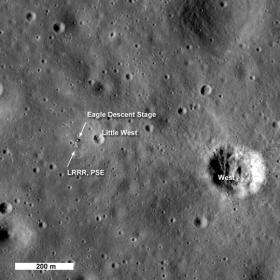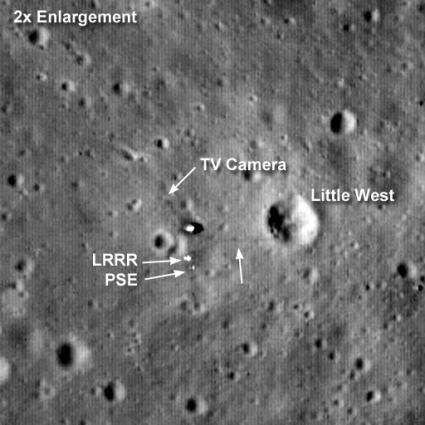A Second Look at Apollo 11

A month after LROC's first image of the Apollo 11 landing site was acquired, LRO passed over again providing the LROC instrument a new view of the historic site.
This time the Sun was 28 degrees higher in the sky, making for smaller shadows and bringing out subtle brightness differences on the surface.

The astronaut path to the TV camera is visible, and you may even be able to see the camera stand (arrow). You can identify two parts of the Early Apollo Science Experiments Package (EASEP), the Lunar Ranging Retro Reflector (LRRR) and the Passive Seismic Experiment (PSE). Neil Armstrong's tracks to Little West crater (33 meter diameter) are also visible (unlabeled arrow).
Launched on June 18, LRO carries seven scientific instruments, all of which are currently undergoing calibration and testing prior to the spacecraft reaching its primary mission orbit. The LROC instrument comprises three cameras -- two high-resolution Narrow Angle Cameras and one lower resolution Wide Angle Camera.
Provided by JPL/NASA (news : web)




















